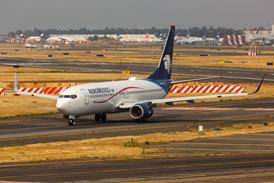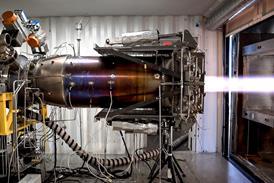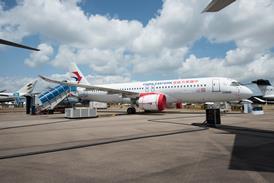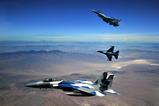Aurora Flight Sciences has received nearly $25 million from the Pentagon to fund the next stage of development for a vertical take-off and landing (VTOL) X-plane.
The contract is part of a programme being overseen by the secretive Defense Advanced Research Projects Agency (DARPA) that aims to develop a novel VTOL aircraft that is also capable of high-speed horizontal flight.

Under the Speed and Runway Independent Technologies (SPRINT) programme, DARPA in November 2023 awarded initial contracts to Aurora, Bell, Piasecki Aircraft and Northrop Grumman to fund initial design work on aircraft with ability to cruise at speeds from 400-450kt (740-830km/h) and to hover in “austere environments from unprepared surfaces”, the agency says.
For its SPRINT design, Boeing subsidiary Aurora submitted a blended-wing-body design that incorporates fan-in-wing rotors to provide vertical lift. The company describes the design as a “high-lift, low-drag” design with embedded engines and moderate sweep.
That approach appears to show promise, as Aurora is now the first manufacturer to advance into the second stage of the SPRINT competition – known as Phase 1B.
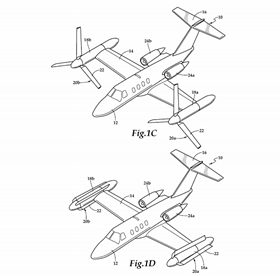
The company won a $24.9 million contact on 30 April for Phase 1B, building on $4.1 million it secured under Phase 1A.
That aligns with an earlier prediction from DARPA, which said it expected to begin announcing Phase 1B winners in May. The SPRINT programme is being run in conjunction with the US Special Operations Command.
Advancement into Phase 1B is based upon design promise and maturation, meaning other competitors may also move forward.
US Navy Commander Ian Higgins, the DARPA programme manager overseeing SPRINT, told FlightGlobal last November that one or more designs may be selected for the next stage.
“We look at the totality of the proposal,” he said, noting experts across a variety of fields evaluated each design for its ability to meet conditions laid out by DARPA.
According to Higgins, Phase 1B will be significantly longer than the six-month period of Phase 1A.
“We want to really see their design mature,” Higgins says of the next stage. “We want to see the technological risks be reduced.”
While DARPA has not specified an exact timeframe for Phase 1B, Higgins says the agency expects it to last approximately 12 to 18 months.



